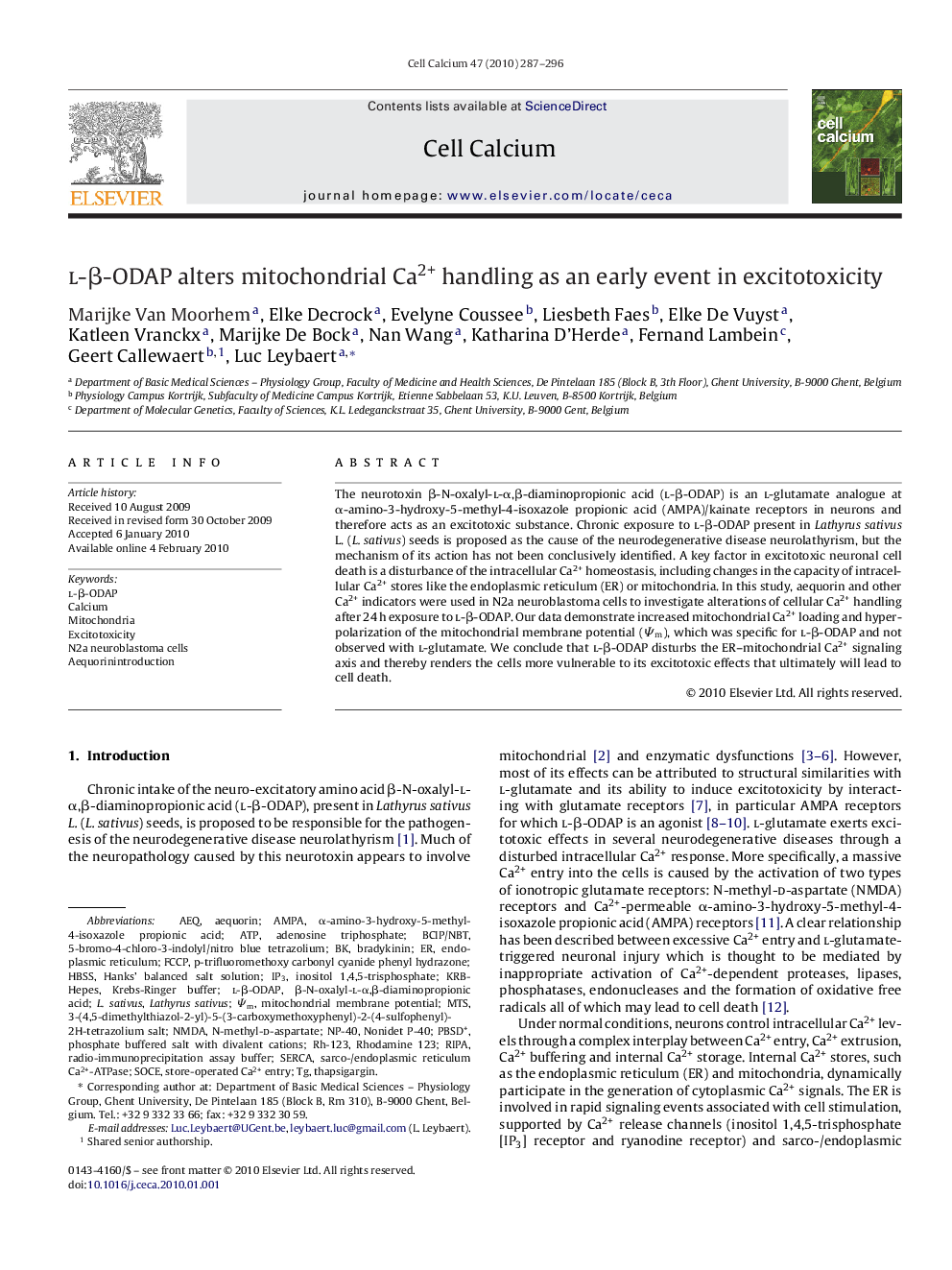| Article ID | Journal | Published Year | Pages | File Type |
|---|---|---|---|---|
| 2166329 | Cell Calcium | 2010 | 10 Pages |
The neurotoxin β-N-oxalyl-l-α,β-diaminopropionic acid (l-β-ODAP) is an l-glutamate analogue at α-amino-3-hydroxy-5-methyl-4-isoxazole propionic acid (AMPA)/kainate receptors in neurons and therefore acts as an excitotoxic substance. Chronic exposure to l-β-ODAP present in Lathyrus sativus L. (L. sativus) seeds is proposed as the cause of the neurodegenerative disease neurolathyrism, but the mechanism of its action has not been conclusively identified. A key factor in excitotoxic neuronal cell death is a disturbance of the intracellular Ca2+ homeostasis, including changes in the capacity of intracellular Ca2+ stores like the endoplasmic reticulum (ER) or mitochondria. In this study, aequorin and other Ca2+ indicators were used in N2a neuroblastoma cells to investigate alterations of cellular Ca2+ handling after 24 h exposure to l-β-ODAP. Our data demonstrate increased mitochondrial Ca2+ loading and hyperpolarization of the mitochondrial membrane potential (Ψm), which was specific for l-β-ODAP and not observed with l-glutamate. We conclude that l-β-ODAP disturbs the ER–mitochondrial Ca2+ signaling axis and thereby renders the cells more vulnerable to its excitotoxic effects that ultimately will lead to cell death.
